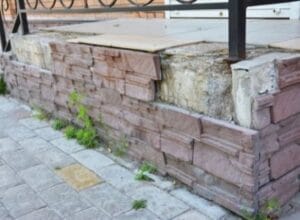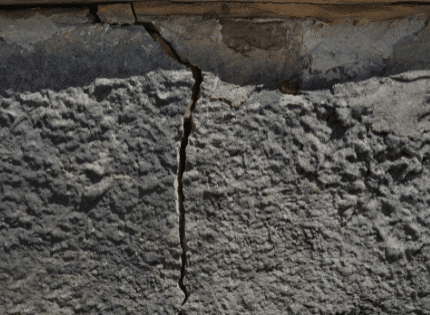
Are you a Seattle resident curious about the cost of foundation repair in your area?
Great! At Regional Foundation Repair, we are your one-stop for all your foundation needs.
In this guide, we discuss everything related to foundation repair costs in the Seattle area, answering common questions like:
- What Is The Cost of Various Foundation Repair Methods In Seattle?
- What Factors Determine The Cost Of Foundation Repair In Seattle?
- What Are The Signs That Your Foundation Is In Need Of Repair In Seattle?
And many more!
For Seattle and other areas in the Pacific Northwest, foundation problems are a common occurrence, with the region ranking high in the list of areas prone to such issues.
Therefore, homeowners will often face damages to their foundation, requiring them to conduct repairs to avoid extensive deterioration of their homes.
Since there is no fixed price for conducting foundation repairs, you should get your home inspected as soon as you identify signs of damage to determine how much it will cost.
If you are looking to conduct repairs but do not know the price, we are here for you.
Tell us more about your project in the provided form, and we will reach out to you with a free, no-obligation estimate. For a more accurate price quote, you could schedule a free inspection with one of our specialists.
Otherwise, read on for more information on the signs of foundation failure, the types and costs of repair methods, and some actions you can take to reduce the costs.
Table of Contents
- What Is The Cost Of Various Foundation Repair Methods In Seattle?
- What Factors Determine The Cost Of Foundation Repair In Seattle?
- What Are The Signs That Your Foundation Is In Need Of Repair In Seattle?
- How Can You Save Money On Foundation Repair In Seattle?
What Is The Cost Of Various Foundation Repair Methods In Seattle?
Depending on the nature and extent of the damage and the type of foundation, various repair methods can be used to fix foundation issues. Below are some of these methods and their estimated costs.
Cost of Fixing Foundation Cracks

Foundation cracks are one of the most common signs of foundation issues. While the cracks themselves are easy to patch up, this is not always the wisest way to go.
In most cases, the cracks often point to underlying problems such as a shifting foundation. Therefore, before conducting foundation crack repairs, you should ensure the underlying issue is resolved, or else they will reappear.
Once the cause of the cracks has been identified and addressed, it is now safe to patch them up and restore the aesthetic of the area. Repairing cracks also prevents the entry of moisture and creatures that could cause further damages to your structure.
The cost of patching up a foundation crack ranges from $250 to $400 for small cracks, where large ones can cost up to $800. This price includes labor costs and the price of materials such as polyurethane foam and epoxy.
Cost Of Slabjacking
Slabjacking is a minimally invasive method used to lift back sunken concrete slabs or floor sections to their original elevation.
Sunken floors or foundation slabs result from changes in the underlying soils which can cause cracks on the floor surface, slanting or uneven floor surfaces, and damaged driveways, to mention a few.
Slabjacking or mudjacking involves pumping slurry under the sunken slab, filling the air spaces, and lifting the slab back to its original elevation.
It requires little labor and takes a few hours to complete, making it one of the cheapest foundation repair methods.
On average, slabjacking a concrete foundation costs between $3 and $25 per square foot. As such, a 500-square foot slab will cost about $1500 and $12500.
Cost of Piering
Piering, also known as underpinning, involves using steel piles pushed beneath the damaged foundation to provide the support to hold it in place to prevent further movement.
The piers also offer the strength required to lift a sunken foundation back to its original position.
The main function of piering is stabilizing the foundation by minimizing the effects of changes in the underlying soils, which is usually the cause of most foundation problems.
The piers are driven past the top layer of unstable soils until a load-bearing level is reached.
This ensures that the changes in the underlying soils do not result in the movement of the foundation. As such, it is a permanent solution that does not have to be repeated over time.
There are various types of piers, varying in their methods of application, their benefits, shortcomings, and also their prices.
Helical Piers
Helical piers or piles are like giant screws rotated into the ground to hold the sinking foundation in place. The piers contain helixes or plates on the side to help cut the soil and offer additional support to prevent lateral movement.
Once the helical piers have been driven to a stable load-bearing soil level, they are attached to the foot of the home’s foundation using brackets, after which the foundation can be jerked up to the required level using hydraulic jacks.
The national average cost of installing helical piers is about $48 to $143 per foot. Therefore, a standard installation that uses 21-foot long piers will cost an average of $1000 to $3000 per pier.
With most installations requiring about four piers, the estimated cost of foundation repair using helical piers will be about $4000 to $12,000.
Steel Piers
Just like helical piers, steel piers are large piles that are driven into the soil to offer support to a failing foundation.
The difference is that steel piers lack helical plates on their side, and instead of being rotated into the ground like screws, they utilize the weight of the house to push them down into the required soil levels. In the process, the home is lifted to its original position.
As a result, steel piers are best used with heavy structures that can bear the force of pushing the piles into the ground.
On average, foundation stabilization using steel piers will cost about $45 to $100 per foot, making the cost of installing standard 21-foot piles to be between $950 to $2100 per pier.
Therefore, a repair job requiring four piles will range between $3800 and $8,400.
Concrete Piers
Just like steel and helical piers, concrete piers are installed underneath a foundation to prevent it from moving or sinking. However, unlike the two that are pre-made, concrete piers are made on site.
The process involves first drilling a deep hole under the foundation to be repaired until the required soil level is achieved.
A concrete mix is then poured into the hole and left to cure, creating large concrete piles that provide the required support to the structure.
The average cost of concrete piers is between $3.5 and $15 per linear foot. Therefore, a concrete pier that is 150 feet long, 12 inches wide, and 12 inches thick will be between $225 and $3,600, with an average of $750.
